There are hundreds of cars coming up for auction during Monterey Car Week and we only have room to discuss a few. Author Wallace Wyss selected this Ferrari Lusso to show how much research is done on some of the cars going up on the block.
Mike Gulett, Editor
by Wallace Wyss –
Yes, there was a Ferrari recently called “Lusso” for “luxury” but that’s not THE Ferrari Lusso.
The real one is the one introduced in the early 60’s as a 1964 model. It was a short-lived model. The concept was to have a more expensive looking car than the short wheelbase 250GT. They also called it the GT/L, the “L” for “Lusso.”
1964 Ferrari 250 GT/L Berlinetta Lusso by Scaglietti
One oddball thing is, though it was available in RHD or LHD, the speedo and tach were always in the middle. What makes the car one of the all-time greats is little things like the vertical front bumper guards having vee shaped slot for the front turn signals or the mesh on the front hood scoop. There was no vent on the side like the SWB 250GT. The design shop that did the design was Pininfarina, Ferrari’s main supplier of designs, while Scaglietti, Ferrari’s in house coachbuilder, did the bodywork.
The Kamm effect tail was something Ferrari discovered when they made the 250GTO–chopping the tail helped it stay on the ground. There’s a hint of a built in spoiler at the rear of the Lusso.
The body was steel, with alloy used for the bonnet, doors and boot lid. Even though it was heavier than the 250GTO and had only three carburetors it is possible to race one, though you have to take a lot of things off, and juice up the engine. How many did they make? I used to hear “400” but when a British engineer was working at Ferrari he checked the records and found it was closer to 350.
According to the research of marque authority Marcel Massini, chassis number 5141 is the 133rd example built, and it was completed in October 1963 as a European-market car with instruments in kilometers. The exterior when it was new was Rosso Duco paint and the interior was trimmed with Nero Vaumol leather by Connolly.
The auction company RM Sotheby’s is presenting this one for sale at Monterey. It was originally sold by the Turin dealer to an unknown Italian owner. Later in the 1960s it went to the US where a subsequent owner painted it metallic silver/grey. In 1970 it went to a famous East coast collector, P. Paul Pappalardo of Batavia, New York.
In 1973 Mr. Pappalardo sold the 250 GT/L to Jack Hughes of Kingston, Ontario, and it got a color change again, this time to metallic light blue. Then in ’81 it went to another East coaster, MacGeorge Snyder of Shoreham, Vermont. During the 10 years he owned it he took it to a lot of Ferrari Club events. Mr. Snyder reportedly entered the car in local Ferrari Owners Club events during an ownership that lasted over a decade.
In 1996 yet another East Coaster, Vermont resident Robert Brown bought it and took it to the 33rd Annual Ferrari Club of America National Meeting at Watkins Glen, New York, in August 1996. Another color change, this time to dark blue, while Richmond Upholstery in Vermont was retained to re-trim the interior in tan leather.
Now I ask you what can make a Lusso more exciting to drive yet not change the exterior? More carburetors (after all, it has the same block as the immortal GTO). So Peter Markowski’s RPM Company added a six-carburetor set-up with velocity stacks.
It had an owner in New Hampshire but then went to a Western owner in May 1999, Harry Matthews of Golden, Colorado, where it was exhibited at a National Ferrari meet. Then it went back to the East Coast. If you fret that the wrong carbs would hurt its chances at concours, no, as at a FCA National Meeting and Concours d’Elegance at Watkins Glen, it won a Gold Award in the Early 12-Cylinder class.
But when it was bought in October 2008 by George Bunting of Monkton, Maryland, he took it to Paul Russell & Company in Essex, Massachusetts, who convinced him the original 3-carburetor intake configuration was better for originality. Also it was taken back to deep blue.
Mr. Bunting then applied for Ferrari Classiche certification, which is where the factory certified it as original mechanically. A Red Book was issued in April 2011 attesting that the car retains its matching-numbers chassis, engine, gearbox, and coachwork, while the suspension and brakes are of the correct specification. Even the rear axle has been replaced with the correct Tipo 539 U component (number 127), and the wheels have been upgraded to slightly wider Borrani wire wheels.
A few mechanical bits were refreshed and the car entered in the 2019 Mountain Mille rally, successfully completing 1,100 miles of trouble-free motoring. As they took it in at Monterey the auction company has a book of invoices and two history reports, one by Massini and the other a Ferrari Classiche certification.
I couldn’t find the projected price, but my opinion is that this car is so well documented that it ought to fetch a good price even in this topsy-turvy economy. I checked Hagerty and they said the highest one has gone for is $3,101,566 but the most recent sale was $1,655,000. Not that many Lussos are for sale at any one time, I’ll say a dozen but some others have “gaps” in their history, gaps that might hide a crash and rebuild. It would be nice if this one was the color it was when born but to me, if all the mechanical bits are right and the engine no. matches the chassis, the color I have no problem with.
One I would have out ahead of this in value is the prototype car as the first and last of a collectable series are the most valuable. But that car, to my knowledge, is not for sale.
Let us know what you think in the Comments.
THE AUTHOR: Wallace Wyss is a long time reporter and Ferrari historian with three published books on the marque. His portraits of Ferraris will be at Concorso Italiano.
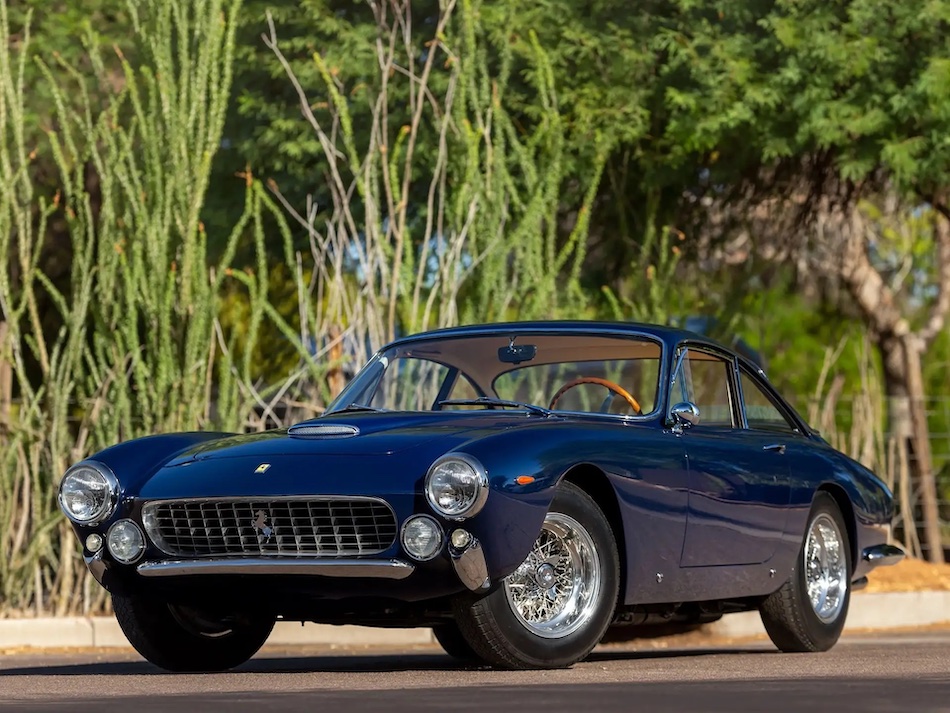
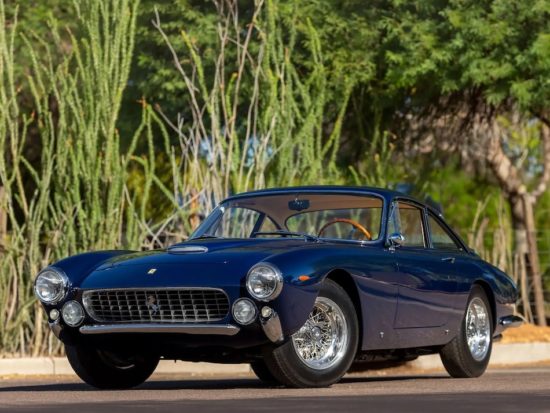
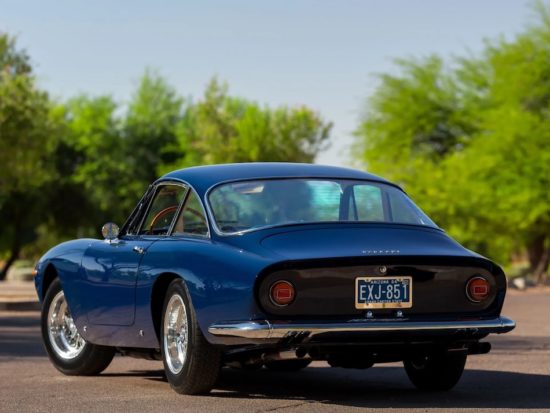
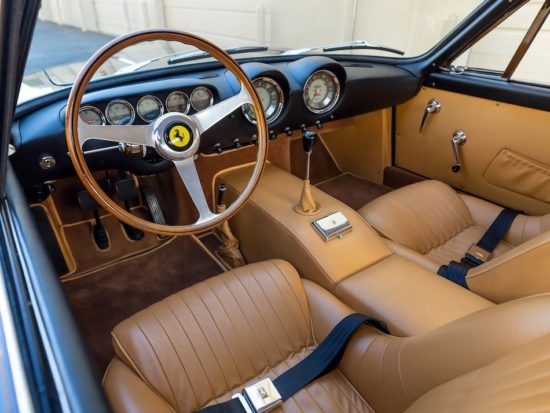
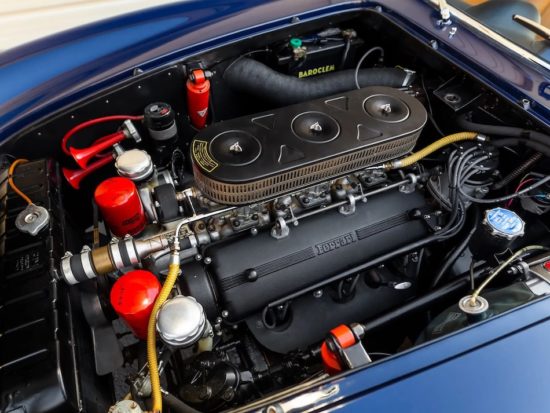
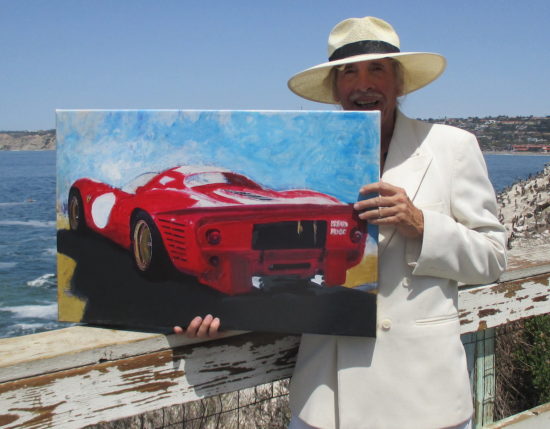
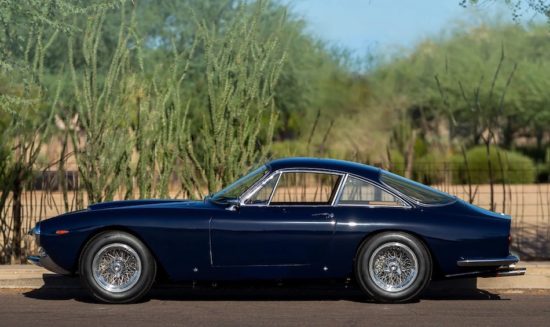


The estimate has been posted now at $1,750,000 – $2,250,000 USD.
I think I’d like the ex-Steve McQueen one because it was a custom color and when someone asked me who owned it before I could say “Oh, it was Steve’s.”